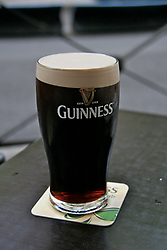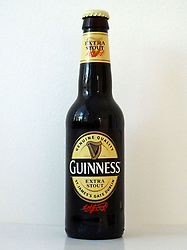Guinness#
by Elisabeth ErtlIn 1759 the successful story of Arthur Guinness and his beer started in Dublin with the signing of a contract of lease of the St. Jame's Gate Brewery in Dublin
Guinness Storehouse, Irland
for the next 9.000 years for 45 pounds per year. Ten years later the first kegs of beer were exported to England. In 1801 first sales were done in the Caribbean.
At the beginning of the 20th century nearly 3.240 people were employed, this means that if you count them and their families, nearly 10.000 people, or every thirtieth inhabitant of Dublin, was tied to the success of the Guinness brewery.
During World War II the export was nearly kept up, but at the end of the war until 1947 export was given up. In 1963 the first brewery outside of Great Britain was built in Nigeria, which gained its independence from Great Britain three years prior.
In 2001 approximately two billion pints of Guinness were drunk every year, of which nearly one million was sold solely in Great Britain. Guinness is sold and drunk in over 150 countries and brewed in 50 countries of the world. Nowadays, over 250 years after its founding, over 850 million litres are sold every year.
The distinctive burnt flavour of a Guinness beer derives from roasted unmalted barley. In the past the lactic flavour was achieved by blending a portion of aged brew with freshly brewed beer. There are in fact several different intensities, depending on the preference of the consumer and climatic conditions, for example, Special Export Stout, Foreign Extra Stout, Bitter, Original/Extra Stout, Draught und Mid Strength. Extra Stout has the highest intensity and is sold primarily in the tropics.
Sources:
- Irland, Verlag Karl Baedeker, 2013
- Wikipedia (cited 2014 Dec 10)




